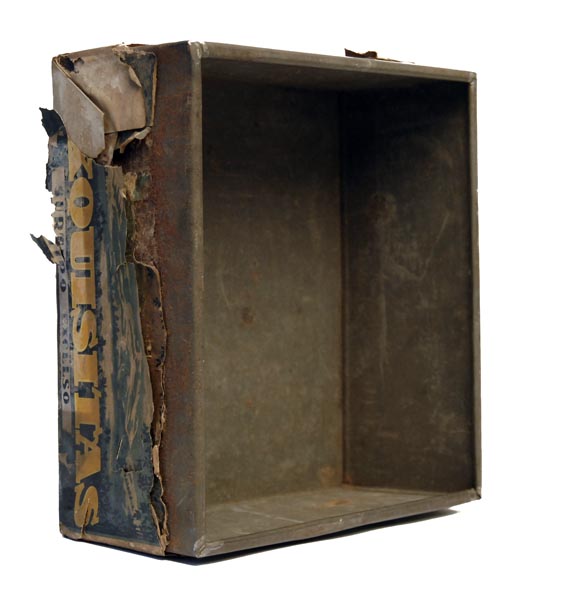These pictures emerged from a tin box full of photographic negatives that I discovered in 2000 at Els Encants, the flea market in Barcelona, Spain. The box had not been tampered with – I found the glass plates and film negatives packed together just as the photographer left them but severely decayed due to poor storage, mold and water damage. Since acquiring the box I have been working to extract images from the fragile, decaying negatives as well as to learn the identity of the photographer.
I have been guided by clues from within the pictures themselves. My search has involved a lot of detective work and plenty of luck; it has taken me to many of the same locations where the original photographs were made. After several years, I was able to confirm the identity of the photographer and I traveled to Sant Feliu de Guixols, a seaside town on the Costa Brava, to meet face to face with his only son, who had deposited the negatives with a junk dealer, to be sold as curiosities at the flea market.
The images document Catalan life from the mid 1920s through the end of World War II. The photographer, named Francisco Casals, was an amateur who seems to have been obsessed with cameras given the large variety of photographic formats he used. He photographed his world incessantly but had trouble with exposure and focus. He took pride in owning a small factory that manufactured electrical insulators for industrial motors. He was also fanatical about bullfighting, an activity that was to fall out of fashion in Catalonia with the rise of Franco (it has been banned in Catalonia today.)
Meeting the photographer’s son (who is in his 70s) was cathartic in some ways; it confirmed a certain chronology and helped to identify certain depicted individuals. Yet surprisingly, the details of Casals’ life seemed increasingly remote and uninteresting. It was the images that attracted me; their broad power as icons of collective memory from the first half of the 20th Century in the Gracia neighborhood of Barcelona – and their lyrical or metaphorical qualities. But these were not the concerns of Francisco Casals. The images I have made from the scraps of glass and acetate and gelatin in the discarded tin box would likely horrify Casals. His focus –or lack thereof, as in the many failed negatives also included in the collection– was on his immediate present. Yet, other forces played an important role in shaping the images we have today. For instance: Time.
While the negatives sat for decades in their rusty tin box in the leaky cabinet in the uncovered courtyard, dust and humidity left their mark. producing a rich patina of stains, cracks, scratches, and other unexplainable textures. In some cases, the damage was so severe as to make recovery of the image a very difficult job. Extracting viable pictures from the negatives became at times an archeological undertaking involving the peeling away of layers of debris or the interpretation and enhancement of limited information. Like any archeologist restoring ancient artifacts, I had to make tough choices. Where does interpretation end and extrapolation begin? What moral responsibilities, if any, should I feel towards the presumed original intent of the photographer? I was not about to remove the lush patina of abandon from my images, even if the ghost of Mr. Casals would have me apply the cutting edge of modern technology to that purpose!
My images? The detective turned archeologist is nothing more than a photographer and visual artist living in a time when “found objects” and “acquired images” are as much a part of an artist’s toolkit as brushes and tubes of paint. Yet, I’m not inclined to consciously “make art” from these images, by altering them, adapting them, or using them as a component in some conceptual scheme. My hope is that viewers will interpret these pictures as broadly or as specifically as they wish. Many times I’ve asked myself what strange forces colluded to bring me to Els Encants that morning. Anyone could have found them, scavengers who would pick and choose the odd negatives they fancied, searching for souvenirs, bit by bit dissolving Casals’ legacy into irrelevance.
for information on the images, click SHOW CAPTIONS at the bottom of the main menu.

